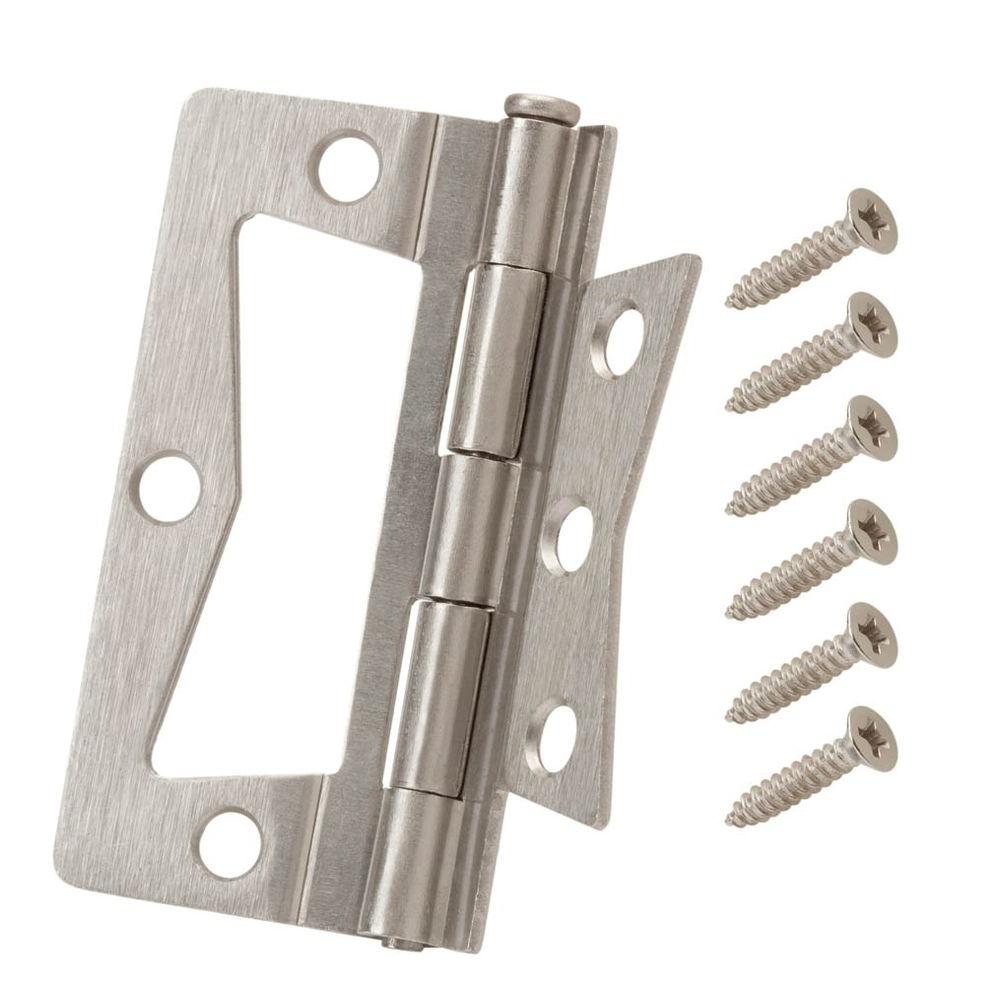
Installing Non Mortise Hinge
Jul 4, 2014 - I am having an issue installing no-mortise inset hinges. I have tried both full wrap and partial wrap hinges and have the same problem.
Tips & Tricks for Installing Hinges No-mortise hinges make installing hinges easier. But there are still some tricks to getting the installation just right. To locate the hinges on the sides of the cabinet, I placed a piece of double-sided tape on each hinge (Figure 1). Then I pressed the door against the side of the cabinet, using an 1⁄8″-thick shim to provide clearance, as shown in Figure 2. With the hinges taped in place, I carefully opened the door and used the hinge as a template to drill the screw holes (Figure 3). Then it’s just a matter of removing the tape and screwing the hinges to the sides of cabinet.
Installing the hinges to mount a door to a project is a task I used to approach with apprehension. The fi nal installation can make or break the look of a project.
For me, locating and cutting the mortises for the hinges perfectly can be a tedious process with no room for error. To solve this problem, I often turn to no-mortise hinges. Sure, you won’t have to cut any mortises, but there are still a few tricks to getting the installation to look just right.
The process that follows for installing a no-mortise hinge covers typical installation where the door is inset in a basic cabinet. But you can use a no-mortise hinge for other types of installations. Aplikasi koperasi simpan pinjam xls file.
Since there aren’t any mortises to help align the door and case with each other, you’ll need another method. And that’s where the hinge comes into the installation process.
The first step is to locate the hinge on the side of the cabinet. To do this, butt the barrel of the hinge tightly against the edge. There’s no specific rule as to where to mount the hinge on either the door or the cabinet.
I make a layout mark based on the size of the hinge and the overall look. Once you’ve located the hinge, drill the holes for the mounting screws in the outer leaf and install the screws. The next step is to locate the screw holes for the hinge in the door.
To do this, remove the door and take the hinge off of the cabinet. You can then use it as a template for locating and drilling the screw holes through the back side of the leaf (Figure 3). The trick here is to fip the hinge and use the barrel as a guide to locate the hinge perfectly, just like you did on the case.
With the hinge flipped this way and aligned on the marks you transferred earlier, drill pilot holes for the screws. Now all you need to do is turn the hinge over and attach it to the door in the correct orientation.
News Mailing List Your Email Address: Subscribe Un-Subscribe System Requirements • Windows OS •.NET Framework Download Latest Version • 4.1 for (Windows 10, 8.1, 8) • 2.1 for (Windows 7, Vista, 2008) • 1.2 for (Old Version) To: download, unzip and copy the folder 'vCardOrganizer' to the destination directory. Page Tools • • • • vCard Editor Features Overview • Create and Modify vCards direcly in the.vcf format • New vCard from template • Full Drag & Drop Support • Full Clipboard integration with explorer interface • vCard photo and logo Support • Merge and Split vCard Collections • Backup and Restore vCards • Tools to find duplicates contacts and results, add formatted names, manage phone prefix • Print and Print Preview of the entire vCard folder or of a single vCard • vCards Groups and Extensions • Just one click away from Skype. 1/2 one half.
Once you have both hinges installed on the door, you can mount the door in the cabinet.